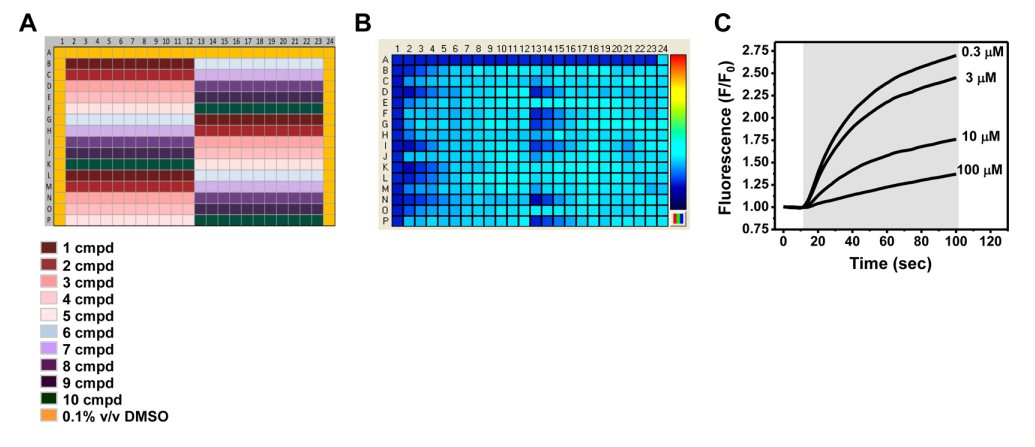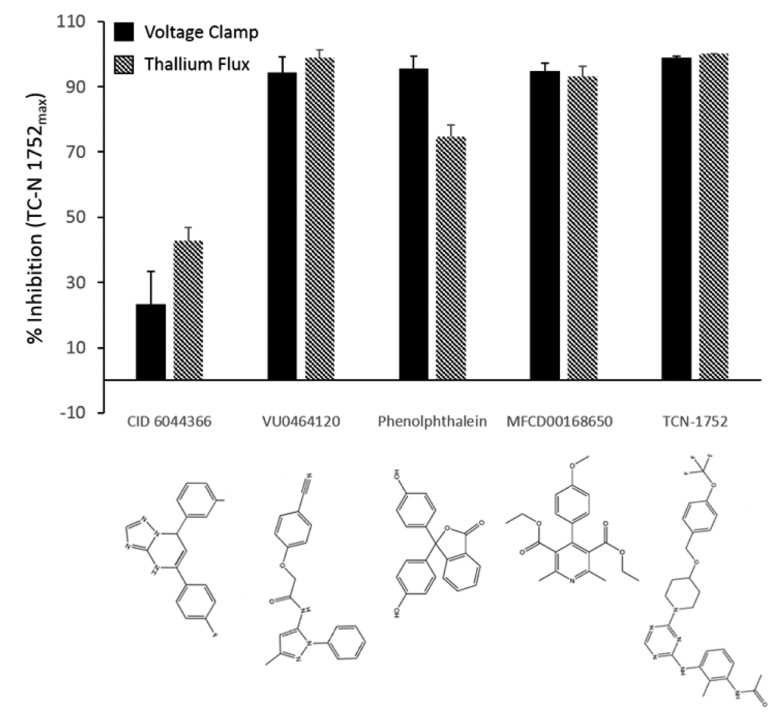- Home
-
Screening
- Ionic Screening Service
-
Ionic Screening Panel
- Ligand Gated Ion Channels
- Glycine Receptors
- 5-HT Receptors3
- Nicotinic Acetylcholine Receptors
- Ionotropic Glutamate-gated Receptors
- GABAa Receptors
- Cystic Fibrosis Transmembrane Conductance Regulators (CFTR)
- ATP gated P2X Channels
- Voltage-Gated Ion Channels
- Calcium Channels
- Chloride Channels
- Potassium Channels
- Sodium Channels
- ASICs
- TRP Channels
- Other Ion Channels
- Stable Cell Lines
- Cardiology
- Neurology
- Ophthalmology
-
Platform
-
Experiment Systems
- Xenopus Oocyte Screening Model
- Acute Isolated Cardiomyocytes
- Acute Dissociated Neurons
- Primary Cultured Neurons
- Cultured Neuronal Cell Lines
- iPSC-derived Cardiomyocytes/Neurons
- Acute/Cultured Organotypic Brain Slices
- Oxygen Glucose Deprivation Model
- 3D Cell Culture
- iPSC-derived Neurons
- Isolation and culture of neural stem/progenitor cells
- Animal Models
- Techinques
- Resource
- Equipment
-
Experiment Systems
- Order
- Careers
FluxOR™ Thallium Assay
FluxOR™ thallium assay has been widely recognized for hERG activity test. This assay is optically based and can be performed on 96-well or 384-well plates as a homogenous assay for high-throughput screening (HTS) measurements of potassium ion channel and transporter activities.
Creative Bioarray provides FluxOR™ assays and services for HTS measurements of potassium ion channels in evaluating drug effects on potassium channel activity.

Fig.1 FluxOR™ thallium assay sensitivity to known pharmacologically active compounds
FluxOR™ thallium assay is carried out in a physiological, normal-chloride saline. Multiple potassium channels including Kv1.3, Kv7.2/Kv7.3, Kv11.1 (hERG), Kir1.1, Kir2.1, Kv1.1, Kv2.1 are expressed in cell lines. Using these cells, FluxOR™ assay can be run to identify and characterize channel-specific inhibitory compounds provided by customers. The FluxOR™ assay has been proven identified several known specific inhibitors of Kv7.2/7.3 or hERG, highlighting its potential to identify novel and more efficacious small-molecule modulators.
This assay is based on the permeability of potassium channels to thallium. To run the assay, cells are loaded with non-fluorescent, thallium-specific FluxOR™ dye. The thallium ions flow freely through open potassium channels, acting as a surrogate indicator of potassium ion channel activity. When potassium channels are opened by a stimulus, the activation of FluxOR™, a novel fluorescent dye with a high affinity for thallium can report channel activity showing a large fluorogenic response that is proportional to the number of open potassium channels on the cell, making it extremely useful for studying K+ channel targets.
The activity of ion channels and transporters that are permeant to thallium can be quantitatively indicated by the fluorogenic signal change. Fluorescence reported in the FluxOR™ system thus becomes a surrogate indicator of activity for any ion channel or transporter that is permeable to thallium.

Fig.2 Comparison of efficacy of selected compounds using Tl+ flux and whole-cell voltage-clamp assays
Highlights
K+ channel specific: measuring ion flux in both voltage- and ligand-gated potassium channels.
Fast: performing screens in high-throughput mode with reproducible results and excellent signal/noise ratio without quenching dye.
Pharmacologically relevant: known blockers show dose-dependent inhibition in a large signal window.
Rapid and robust high-throughput screening (HTS) of potassium channel targets in a novel equilibrium measurement, reproducibly giving IC50 values that are predictive of block or modulation in lower-throughput platforms.
Sensitive: low mM levels of extracellular thallium give large signals in high-throughput mode.
Target flexibility and ease of operation: The assay provides a concentrated thallium solution and all necessary buffers, allowing a homogenous format that has been demonstrated for use with cells stably expressing hERG, as well as expression of other target channels.
References
Raphemot R, et al. High-throughput screening for small-molecule modulators of inward rectifier potassium channels. J Vis Exp. 2013; 27(71).
Du Y, et al. Development and Validation of a Thallium Flux-Based Functional Assay for the Sodium Channel Nav1.7 and Its Utility for Lead Discovery and Compound Profiling. ACS Chem. Neurosci. 2015; 6: 871–878.
Related Section
- Optogenetics
- Neuronal Tract Tracing
- Manual Patch-clamp Technique
- Automated Patch-clamp
- Multi-Electrode Array (MEA)
- FLIPR Detection System
Inquiry

